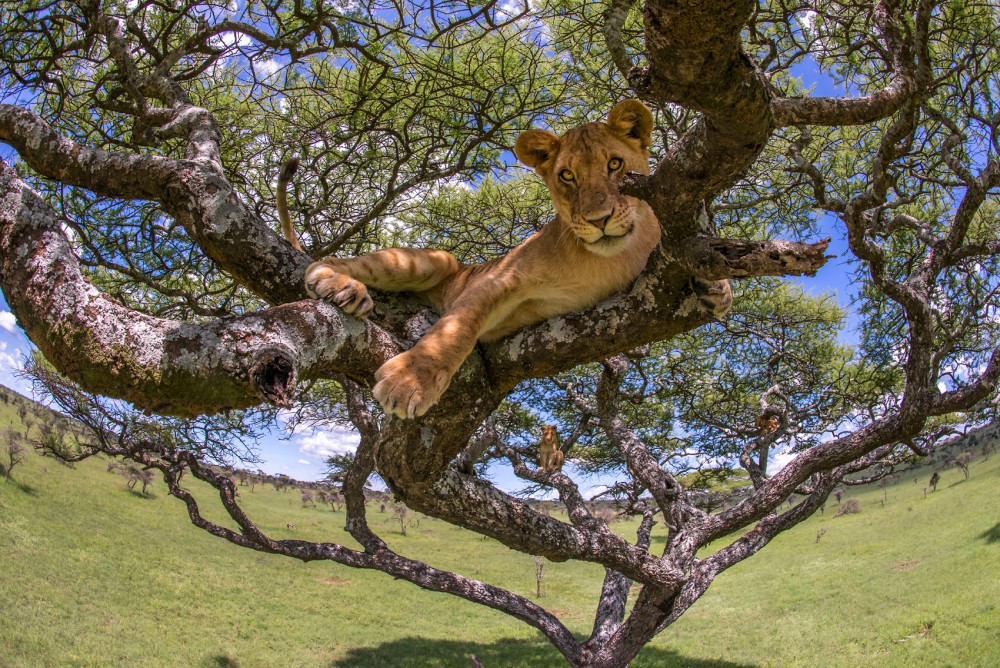Obviously, Minnesota’s wildlife is vastly different from the wildlife of the African plains.
But that hasn’t stopped Craig Packer from making the University of Minnesota a hub for lion research in the United States.
Packer, a University professor and director of the UMN Lion Center, will deliver a talk about African Lion research and conservation at the Minneapolis Photo Center on Tuesday.
He will also present photos from the Lion Center’s internationally successful Snapshot Serengeti project, as well as the photos taken by his long-time research assistant, Swedish nature photographer Daniel Rosengren.
Packer started at the U in 1983 after spending time as a Stanford undergrad studying with Jane Goodall in Africa. He led the Serengeti Lion Project in Tanzania after graduate school.
He talked with the Daily about his career studying lions, the Lion Center’s research and the conservation efforts for the endangered African lion.
How did the U come to have a Lion Research Center? Is that something that came over with you?
Yeah, it was me. We were studying lions, and we were attracting graduate students, so we started the Lion Research Center in the early 1990s.
We used that as a flag for disseminating the results of our research online at lionresearch.org. Recently, we thought we should change the name a little bit to better present the kind of work we do to the public, so now it’s just called the Lion Center.
How did you get started studying lions?
Well, it’s complicated.
I was really lucky as an undergraduate. My university had a program that would send four undergraduates a year to Tanzania to work with Jane Goodall [studying baboons].
I was accepted and ready to go to medical school, but I had this chance to go to Africa. Once I got there, I thought it was a lot more fun than becoming a doctor, so I’ve stuck with it.
I eventually became a graduate student and went back to Goodall’s place [and] did my doctoral research there. After I was done, I looked for something else to do. My friends who had also been working in Tanzania were just finishing their time on the Serengeti Lion Project, so I took it over.
Why do you find lions so fascinating?
They’re such an unusual species in that they’re very cooperative.
Cooperation is relatively rare in nature — most animals are really selfish, and everything they do is for their short-term self-interest. There are a few exceptions, like ants and bees.
Among the cats, there’s this exceptional species, the lion. All the other cats are very solitary, and yet the lion is very social and does a lot of things that are very cooperative.
I wanted to look at that cooperative behavior and get a sense of what made them tick.
What will you be discussing at the “Snapshots on the Serengeti” talk?
I’ll talk about my history and how I got started in all of this. Then we’re going to show a lot of really cool pictures from the camera traps we set up in Serengeti, followed by an update about the conservation work and a new project in South Africa. I continued research in the Serengeti Park in Tanzania until about a year ago, when I shifted my research to South Africa.
What is the Snapshot Serengeti project?
In brief, there’s a grid of about 200 camera traps in the Serengeti, and there’s so many animals there that we get millions of photographs.
We put the photographs online, and you can go to snapshotserengeti.org and pull up the photographs, and we need your help to tell us, “Is it a wildebeest? Is it a buffalo? What is it?”
When enough people have said what they think is shown in a particular picture, it gets retired. Then we take people’s assessments, and it turns out that they are really accurate.
So with the millions of photographs that have been taken by these cameras over the years, we can say which species of animal stood in front of our camera on a given day at a given place, every day for the last five years or so.
Is there a split between you feeling the need to do research versus awareness? Are they at odds with each other?
Well, that’s an interesting question. Since when I first started studying the lions, the conservation crisis now has gotten very severe.
We published a paper a few months ago, where we think there might be only about 20,000 lions left in Africa. And the number of lions has decreased probably by about half at least across the entire continent of Africa [since 1993]. This is primarily due to rapid human population growth, all the poaching and the livestock conflicts.
Whereas my research originally was basic research, now it’s become more critical to get an understanding about the conservation status of the lions, what things help to protect the status of the lions, conflicts of people, and so on. That means I’ve become more of a spokesperson for what’s needed to protect lions in the future.
Are there ways for people who aren’t involved in the Lion Center to get involved in the conservation effort?
Well, I think first thing is to look at our webpage and look at some of the issues we are trying to deal with.
Some of the problems are really tough because national parks in Africa need additional funding besides what they can get from tourist revenues. That’s going to take the whole world to commit to providing funding, and that’s kind of hard for us as individuals to influence.
But on the other hand, if people think about that and support initiatives to do that, then OK, maybe it can happen, but it’s going to be a slow and gradual process.
“Snapshots on the Serengeti” lecture and presentation
Where Minneapolis Photo Center, 2400 N. Second St., Minneapolis
When 6 p.m. Tuesday
Cost Free, registration required

















